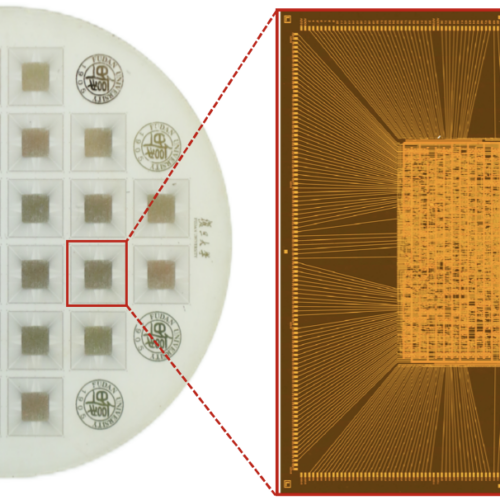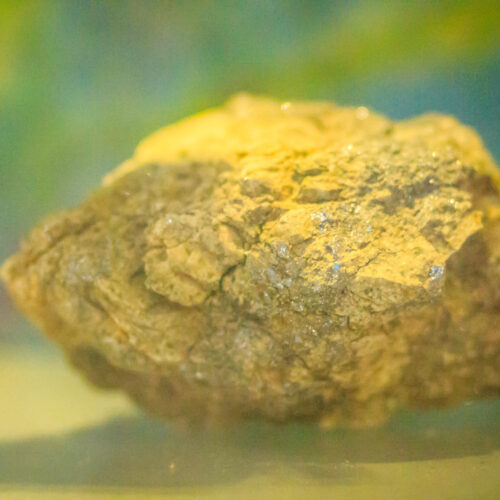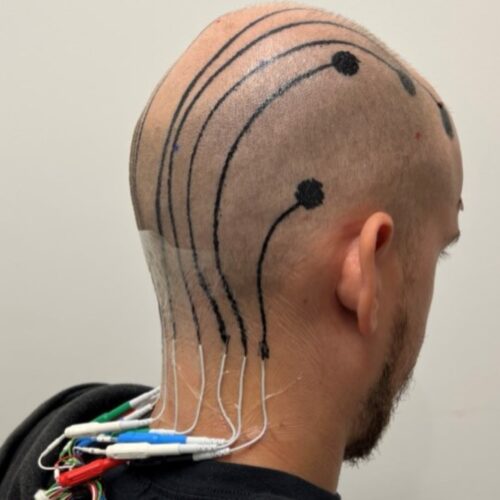Normal view
-
Latest Tech News from Ars Technica
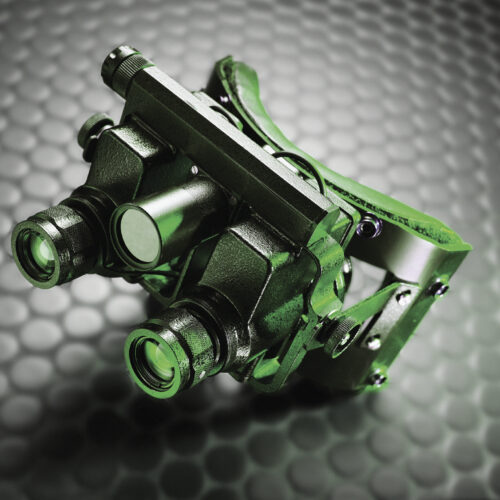
- New material may help us build Predator-style thermal vision specs
New material may help us build Predator-style thermal vision specs
Military-grade infrared vision goggles use detectors made of mercury cadmium telluride, a semiconducting material that’s particularly sensitive to infrared radiation. Unfortunately, you need to keep detectors that use this material extremely cool—roughly at liquid nitrogen temperatures—for them to work. “Their cooling systems are very bulky and very heavy,” says Xinyuan Zhang, an MIT researcher and the lead author of a new study that looked for alternative IR-sensitive materials.
Added weight was a sacrifice the manufacturers of high-end night-vision systems were mostly willing to make because cooling-free alternatives offered much worse performance. To fix this, the MIT researchers developed a new ultra-thin material that can sense infrared radiation without any cooling and outperforms cooled detectors at the same time. And they want to use it to turn thermal vision goggles into thermal vision spectacles.
Staying cool
Cooling-free infrared detectors have been around since before World War II and mostly relied on pyroelectric materials like tourmaline that change their temperature upon absorbing infrared radiation. This temperature change, in turn, generates an electric current that can be measured to get a readout from the detector. Although these materials worked, they had their issues. Operating at room temperature caused a lot of random atomic motion in the pyroelectric material, which introduced electrical noise that made it difficult to detect faint infrared signals.


© Glasshouse Images
-
Latest Tech News from Ars Technica
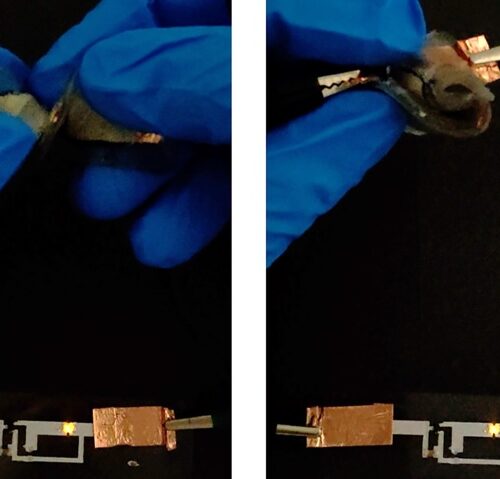
- Scientists made a stretchable lithium battery you can bend, cut, or stab
Scientists made a stretchable lithium battery you can bend, cut, or stab
The Li-ion batteries that power everything from smartphones to electric cars are usually packed in rigid, sealed enclosures that prevent stresses from damaging their components and keep air from coming into contact with their flammable and toxic electrolytes. It’s hard to use batteries like this in soft robots or wearables, so a team of scientists at the University California, Berkeley built a flexible, non-toxic, jelly-like battery that could survive bending, twisting, and even cutting with a razor.
While flexible batteries using hydrogel electrolytes have been achieved before, they came with significant drawbacks. “All such batteries could [only] operate [for] a short time, sometimes a few hours, sometimes a few days,” says Liwei Lin, a mechanical engineering professor at UC Berkeley and senior author of the study. The battery built by his team endured 500 complete charge cycles—about as many as the batteries in most smartphones are designed for.
Power in water
“Current-day batteries require a rigid package because the electrolyte they use is explosive, and one of the things we wanted to make was a battery that would be safe to operate without this rigid package,” Lin told Ars. Unfortunately, flexible packaging made of polymers or other stretchable materials can be easily penetrated by air or water, which will react with standard electrolytes, generating lots of heat, potentially resulting in fires and explosions. This is why, in 2017, scientists started to experiment with quasi-solid-state hydrogel electrolytes.


A 32-bit processor made with an atomically thin semiconductor
On Wednesday, a team of researchers from China used a paper published in Nature to describe a 32-bit RISC-V processor built using molybdenum disulfide instead of silicon as the semiconductor. For those not up on their chemistry, molybdenum disulfide is a bit like graphene: a single molecule of MoS2 is a sheet that is only a bit over a single atom thick, due to the angles between its chemical bonds. But unlike graphene, molybdenum disulfide is a semiconductor.
The material has been used in a variety of demonstration electronics, including flash storage and image sensors. But we've recently figured out how to generate wafer-scale sheets of MoS2 on a sapphire substrate, and the team took advantage of that to build the processor, which they call RV32-WUJI. It can only add single bits at a time and is limited to kilohertz clock speeds, but it is capable of executing the full RISC-V 32-bit instruction set thanks to nearly 6,000 individual transistors.
Going flat
We've identified a wide range of what are termed 2D materials. These all form repeated chemical bonds in more or less a single plane. In the case of graphene, which consists only of carbon, the bonds are all in the same plane, meaning the molecule is as thick as a carbon atom. Molybdenum disulfide is slightly different, as the angle of the chemical bonds is out of plane, resulting in a zig-zag pattern. This means the sheet is slightly thicker than its component atoms.


© Ao, et. al.
-
Latest Tech News from Ars Technica

- Researchers get spiking neural behavior out of a pair of transistors
Researchers get spiking neural behavior out of a pair of transistors
The growing energy use of AI has gotten a lot of people working on ways to make it less power hungry. One option is to develop processors that are a better match to the sort of computational needs of neural networks, which require many trips to memory and a lot of communication between artificial neurons that might not necessarily reside on the same processor. Termed "neuromorphic" processors, this alternative approach to hardware tends to have lots of small, dedicated processing units with their own memory and an extensive internal network connecting them.
Examples like Intel's Loihi chips tend to get competitive performance out of far lower clock speeds and energy use, but they require a lot of silicon to do so. Other options give up on silicon entirely and perform the relevant computation in a form of phase change memory.
A paper published in Nature on Wednesday describes a way to get plain-old silicon transistors to behave a lot like an actual neuron. And unlike the dedicated processors made so far, it only requires two transistors to do so.


© jxfzsy
Study: Hot Vesuvian ash cloud really did turn a brain to glass
For several years now, we've been following a tantalizing story indicating that the high heat of the ash cloud generated when Mount Vesuvius erupted in 79 AD was sufficiently hot to turn one of the victim's brain into glass. It remains a matter of debate in the archeological community, but a fresh analysis of the physical properties of the glass-like material found in the remains lends more evidence to the hypothesis, as detailed in a new paper published in the journal Scientific Reports.
As previously reported, the eruption of Mt. Vesuvius released thermal energy roughly equivalent to 100,000 times the atomic bombs dropped on Hiroshima and Nagasaki at the end of World War II, spewing molten rock, pumice, and hot ash over the cities of Pompeii and Herculaneum in particular. The vast majority of the victims died of asphyxiation, choking to death on the thick clouds of noxious gas and ash.
But a 2001 study in Nature, co-authored by Italian archaeologist Pier Paolo Petrone, estimated a temperature of 500° Celsius (932° Fahrenheit) for the pyroclastic surge that destroyed Pompeii, sufficient to kill inhabitants in fractions of a second. Back in 2018, we reported on Petrone's conclusion that inhabitants of Herculaneum may have suffered a similar fate. There was fracturing in the bones and "cracking and explosion" of the skullcaps, consistent with forensic cases where skulls burst from extreme heat.


© Pier Paolo Petrone
-
Latest Tech News from Ars Technica

- The seemingly indestructible fists of the mantis shrimp can take a punch
The seemingly indestructible fists of the mantis shrimp can take a punch
The mantis shrimp comes equipped with its own weapons. It has claws that look like permanently clenched fists that are known as dactyl clubs. But when it smashes the shells of its prey, these fists come out of it undamaged.
When throwing punches, mantis shrimp can strike at the speed of a .22 caliber bullet (about 1,316 kmph or 818 mph)—one of the fastest movements in the animal kingdom. That generates a force over a thousand times their body weight. However, unleashing that much energy can backfire because the shockwaves it produces could seriously damage an animal’s soft tissue. None of that seems to affect the mantis shrimp. Now we finally know why.
When a team of researchers from Northwestern University studied the dactyl clubs of one mantis shrimp species, they found that they have layered structures that selectively block sound waves, acting as protective gear against vibrations that could otherwise harm the shrimp. These types of structures, known as phononic mechanisms, filter out sound waves that could otherwise cause nerve and soft tissue trauma.


© Giordano Cipriani
Researchers figure out how to get fresh lithium into batteries
As the owner of a 3-year-old laptop, I feel the finite lifespan of lithium batteries acutely. It's still a great machine, but the cost of a battery replacement would take me a significant way down the path of upgrading to a newer, even greater machine. If only there were some way to just plug it in overnight and come back to a rejuvenated battery.
While that sounds like science fiction, a team of Chinese researchers has identified a chemical that can deliver fresh lithium to well-used batteries, extending their life. Unfortunately, getting it to work requires that the battery has been constructed with this refresh in mind. Plus it hasn't been tested with the sort of lithium chemistry that is commonly used in consumer electronics.
Finding the right chemistry
The degradation of battery performance is largely a matter of its key components gradually dropping out of use within the battery. Through repeated cyclings, bits of electrodes fragment and lose contact with the conductors that collect current, while lithium can end up in electrically isolated complexes. There's no obvious way to re-mobilize these lost materials, so the battery's capacity drops. Eventually, the only way to get more capacity is to recycle the internals into a completely new battery.


© Kinga Krzeminska
Modern Synthesis is making compostable materials that last a lifetime
Modern Synthesis’s fibers can be manipulated in ways that simple plant fibers cannot.
© 2024 TechCrunch. All rights reserved. For personal use only.
Using 2D materials on chips without destroying the wiring
Silicon chip manufacturers like Intel and TSMC are constantly outdoing themselves to make ever smaller features, but they are getting closer to the physical limits of silicon.
“We already have very, very high density in silicon-based architectures where silicon performance degrades sharply,” said Ki Seok Kim, a scientist working at the Massachusetts Institute of Technology’s Research Laboratory of Electronics.
One way around this problem is to replace silicon with graphene-like 2D materials that maintain their semiconducting properties even at a single-atom scale. Another way is building 3D chips, which squeeze more transistors into the same area without making transistors smaller. Kim’s team did both, building a 3D chip out of vertically stacked 2D semiconductors.


© Kwisky
The physics of ugly Christmas sweaters
'Tis the season for many holiday traditions, including the Ugly Christmas Sweater—you know, those 1950s-style heavy knits featuring some kind of cartoonish seasonal decoration, like snowflakes, Santa Claus, or—in the case of Mark Darcy from Bridget Jones' Diary (2001)—Rudolph the Red-Nosed Reindeer. "It’s obnoxious and tacky, but also fuzzy and kind of wholesome—the fashion equivalent of a Hallmark Christmas movie (with a healthy dose of tongue-in-cheek)," as CNN's Marianna Cerini recently observed.
Fashion (or lack thereof) aside, sweaters and other knitted fabric are also fascinating to physicists and mathematicians. Case in point: a recent paper published in the journal Physical Review Letters examining the complex mechanics behind the many resting shapes a good Jersey knit can form while at rest.
Knitted fabrics are part of a class of intertwined materials—which also includes birds' nests, surgical knots, knotted shoelaces, and even the degradation of paper fibers in ancient manuscripts. Knitted fabrics are technically a type of metamaterial: an engineered material that gets its properties not from the base materials but from their designed structures. The elasticity (aka, stretchiness) of knitted fabrics is an emergent property: the whole is more than the sum of its parts. How those components (strands of yarn) are arranged at an intermediate scale (the structure) determines the macro scale properties of the resulting fabric.


© Miramax Films
Generating power with a thin, flexible thermoelectric film
The No. 1 nuisance with smartphones and smartwatches is that we need to charge them every day. As warm-blooded creatures, however, we generate heat all the time, and that heat can be converted into electricity for some of the electronic gadgetry we carry.
Flexible thermoelectric devices, or F-TEDs, can convert thermal energy into electric power. The problem is that F-TEDs weren’t actually flexible enough to comfortably wear or efficient enough to power even a smartwatch. They were also very expensive to make.
But now, a team of Australian researchers thinks they finally achieved a breakthrough that might take F-TEDs off the ground.


Albert Invent hopes to revolutionize the chemicals sector with its AI platform
If startup funding rounds are any metric, generative AI is seeing ample adoption in the sciences. It makes sense: there’s a lot of trial and error involved in research and development, and any tool that can speed up the process for researchers is bound to be useful. The latest is Albert Invent, which offers an […]
© 2024 TechCrunch. All rights reserved. For personal use only.
E-tattoos could make mobile EEGs a reality
Epidermal electronics attached to the skin via temporary tattoos (e-tattoos) have been around for more than a decade, but they have their limitations, most notably that they don't function well on curved and/or hairy surfaces. Scientists have now developed special conductive inks that can be printed right onto a person's scalp to measure brain waves, even if they have hair. According to a new paper published in the journal Cell Biomaterials, this could one day enable mobile EEG monitoring outside a clinical setting, among other potential applications.
EEGs are a well-established, non-invasive method for recording the electrical activity of the brain, a crucial diagnostic tool for monitoring such conditions as epilepsy, sleep disorders, and brain injuries. It's also an important tool in many aspects of neuroscience research, including the ongoing development of brain-computer interfaces (BCIs). But there are issues. Subjects must wear uncomfortable caps that aren't designed to handle the variation in people's' head shapes, so a clinician must painstakingly map out the electrode positions on a given patient's head—a time-consuming process. And the gel used to apply the electrodes dries out and loses conductivity within a couple of hours, limiting how long one can make recordings.
By contrast, e-tattoos connect to skin without adhesives, are practically unnoticeable, and are typically attached via temporary tattoo, allowing electrical measurements (and other measurements, such as temperature and strain) using ultra-thin polymers with embedded circuit elements. They can measure heartbeats on the chest (ECG), muscle contractions in the leg (EMG), stress levels, and alpha waves through the forehead (EEG), for example.


© University of Texas at Austin
